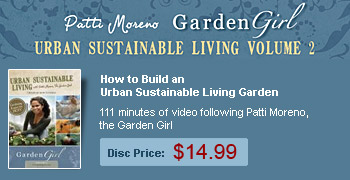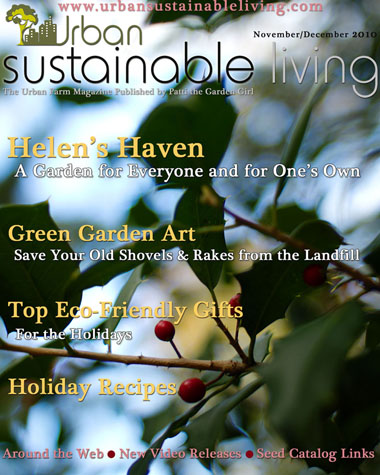Knitting and Crafts
There's more to sustainable living than just vegetable gardening. In this section, I'm going to share with you some sustainable and eco-friendly arts and craft ideas.
As you may know, I raise small livestock. In addition to my chickens, I keep angora rabbits and goats as well. Not only are these great animals for fertilizing my garden, they also both produce wool, which I can use to knit clothing for myself and my family. This is anther example of sustainability: I feed them from my garden, they give back, and the cycle continues. In these videos I'll take you step by step through the whole process of shearing my livestock, carding the wool, spinning it into yarn, and knitting it into a fun scarf! I'll also share some other fun and organic craft ideas to put to use around your home and garden.
How to Shear a Rabbit for Spinning and Knitting Angora yarn
Proper spacing of your vegetable plants is one of the hardest and most annoying things to get right when you're trying to grow vegetables, especially when you're planting tiny seeds like carrots and lettuce. By making your own seed tape at home, you can get your kids involved in planting and make sure your seeds are spaced out correctly all at the same time.
Homemade seed tape is a great project for me and my daughter to do together on a rainy day. All you need is some flour and water, toilet paper, paint brushes and seeds.
Read more...How to Card Angora Fiber for Spinning and Knitting
This is simple and ultimately rewarding. You will see that I have a basket full of that gorgeous hair that I sheared from my angora rabbit. I am working with it by the handful only. I am working with two hand carders (brushes). The first time I run the wool over the carder to make sure the fibers are lining up. Then once the whole handful is on one carder, I use the other to transfer the fibers from one to the other. It is important to make at least three passes from one brush to the other. We do this to make sure the fiber has no vegetable matter, dirt, flecks of matter, etc…You just want the fibers to be as clean and pure as possible. Once you have transferred the fibers from one card to the other at least three times, I did it four times; the last hairs that are left on the empty card will not be used. It is best for the hairs to be at least 3” long – any hairs less than that will not work as well as I spin into yarn. All of the hair that is left on the other card, you are now ready to take it off of the brush and roll it up into a rollag.
Read more...How to Hand Spin Wool
Did you know that you can make your own garments with your own hand spun yarn?
You can because I do it all the time. Today you are finding me in the “Tiny House” which is my favorite place to spin yarn. It is a miniscule building on my property and I snapped it up as the place for me to do what I love…spin.
The yarn that I spin comes straight from the animals that I have raised on my farm. Today, I’m working with Angora (rabbit) and Pygora (goat) fibers as well as Merino wool.
I won’t say that what I am about to teach you is easy, but I will say that it’s totally worthwhile.
How to Make a one Bobbin Scarf
It’s a rainy day and I am in my tiny house spinning again! I told you, it’s addictive. Today I’m working on making a one bobbin scarf which is unique because although I am using only one bobbin, I am able to combine several different types of fibers which will make a very unique handspun scarf that everyone will admire and you can tell them…it’s not available in stores!
You see here that I am working with Merino and Pygora Fibers. I like to work with Pygora because, believe it or not, it is seven times warmer than wool. The only challenge of working with Pygora is that these goats have unique hair that includes “guard” hairs that have to be removed before spinning it into yarn. The angora fibers can be slippery, but they are super-soft and leave cloud-like puffs in your fiber. It’s unique and attractive. Look at it.
Read more...How to Shear a Pygora Goat
I’ve come a long way baby! From a city apartment near the East River to shearing pygora goats on my urban farm in New England. What a difference a day makes. Today, I’m shearing my Pygora goat with my friend, Sam, who has been raising goats for nearly a decade.
Read more...Using Milk Paint
What is Milk Paint?
Today you're going to find out.
I'm doing some exterior painting in my garden and milk paint is a special paint that does extremely well with unfinished woods. It is called milk paint because it is made from milk protein, and it soaks up color extremely well, finishing with a nice matte finish. It adds a rustic look to everything that it touches which is why it's so popular for those who know about it, and wood workers swear by it. Once your item is painted, with all the colors except for white, the paint shows water marks which makes your pieces look even more rustic and unique.
Read more...











